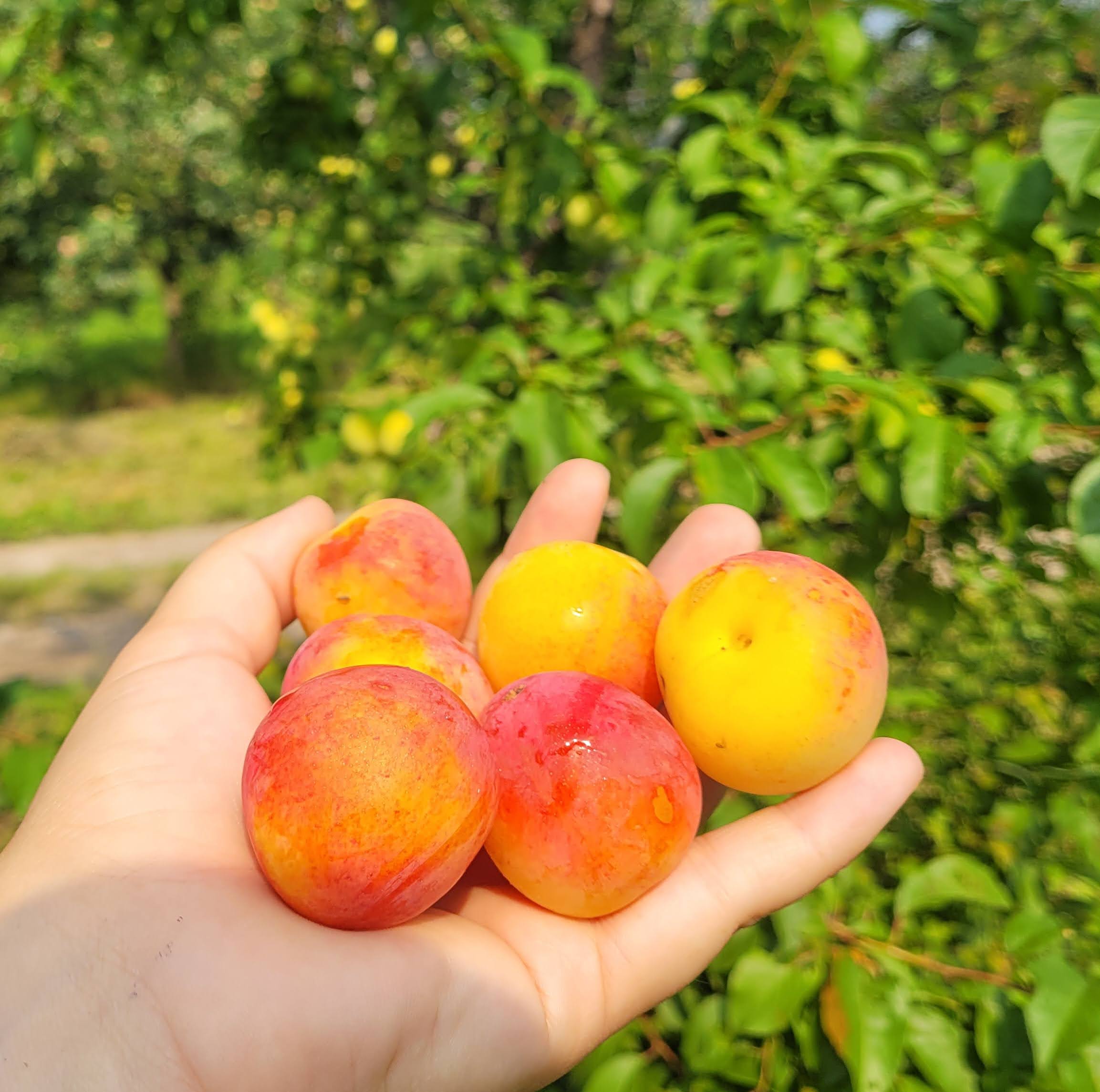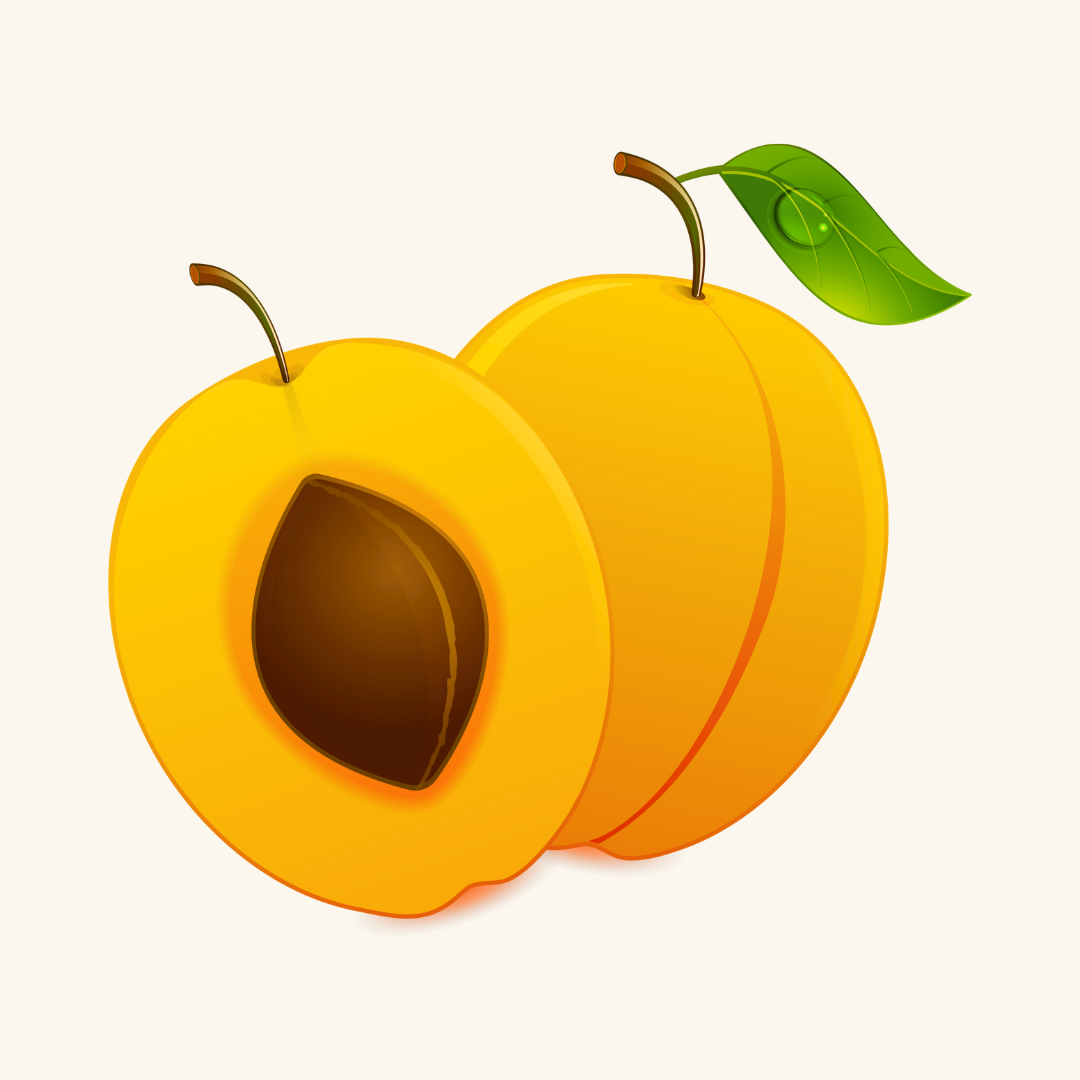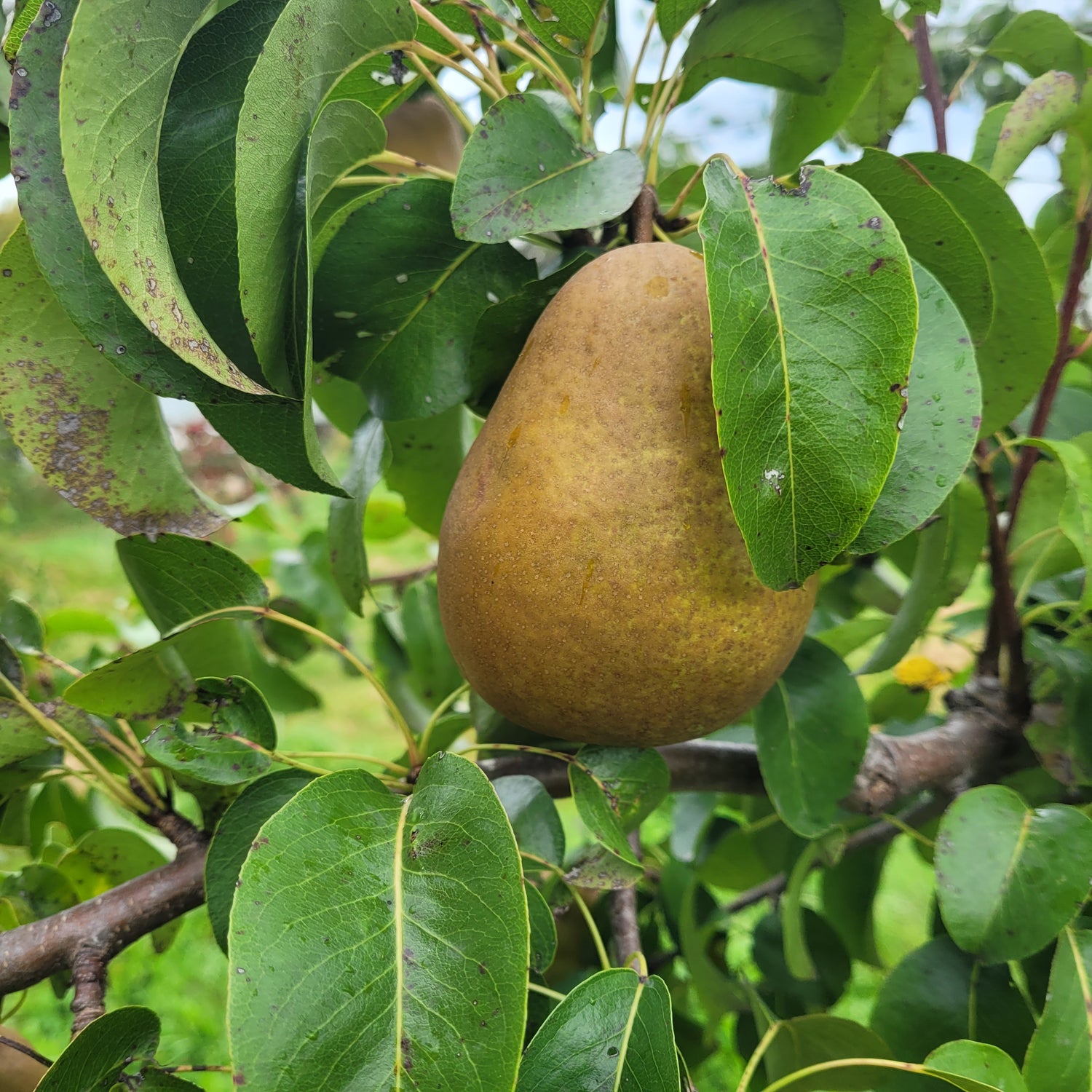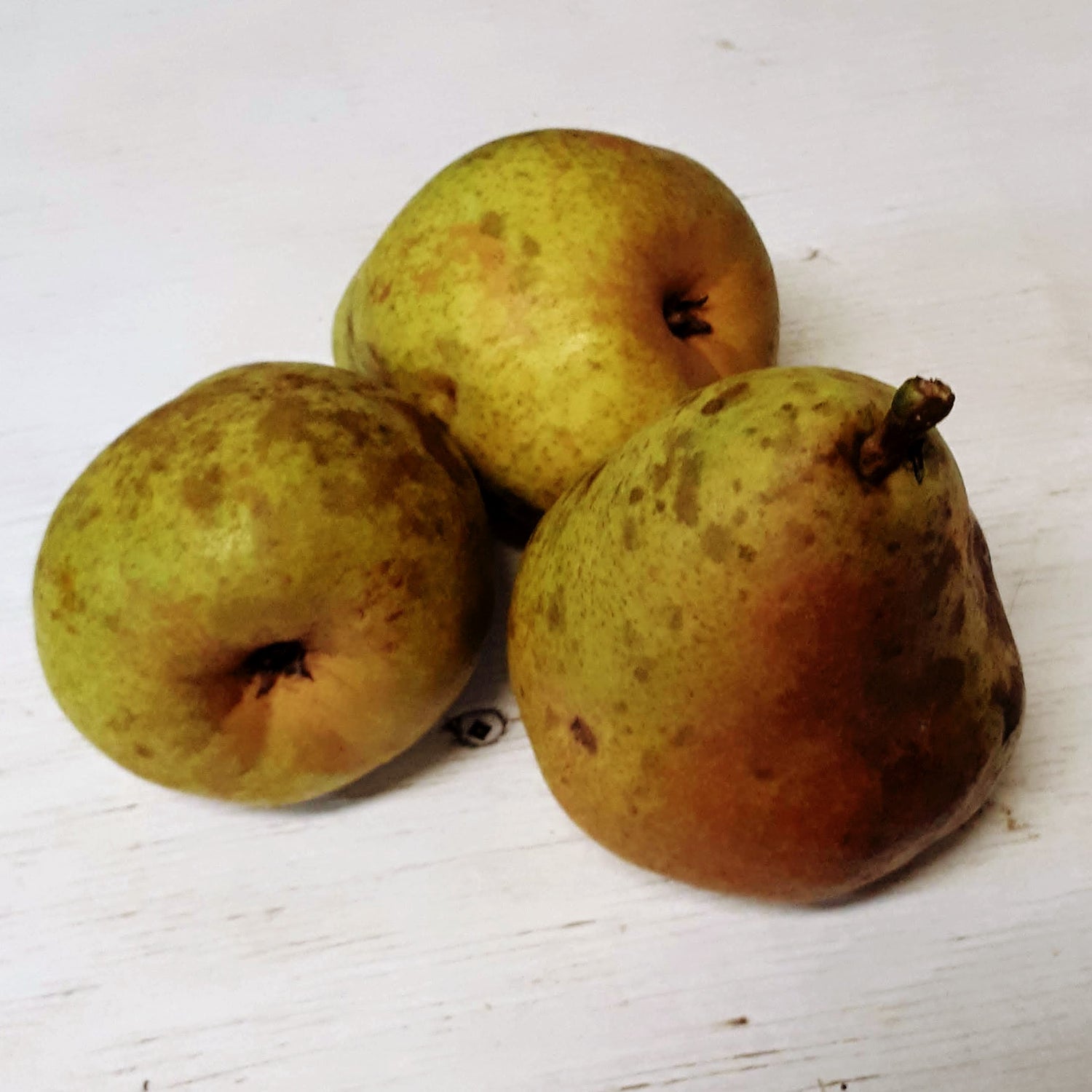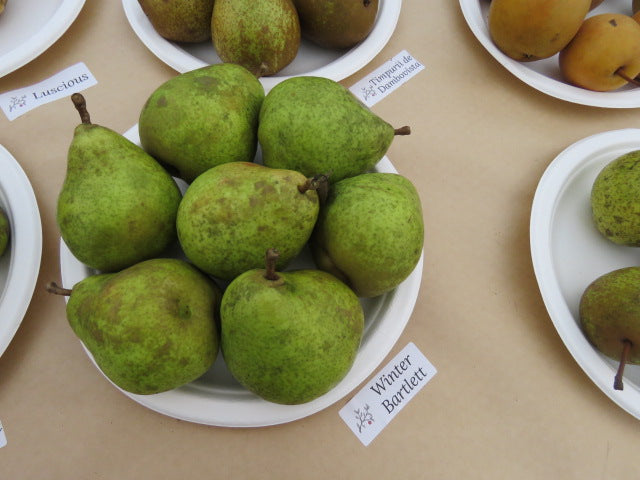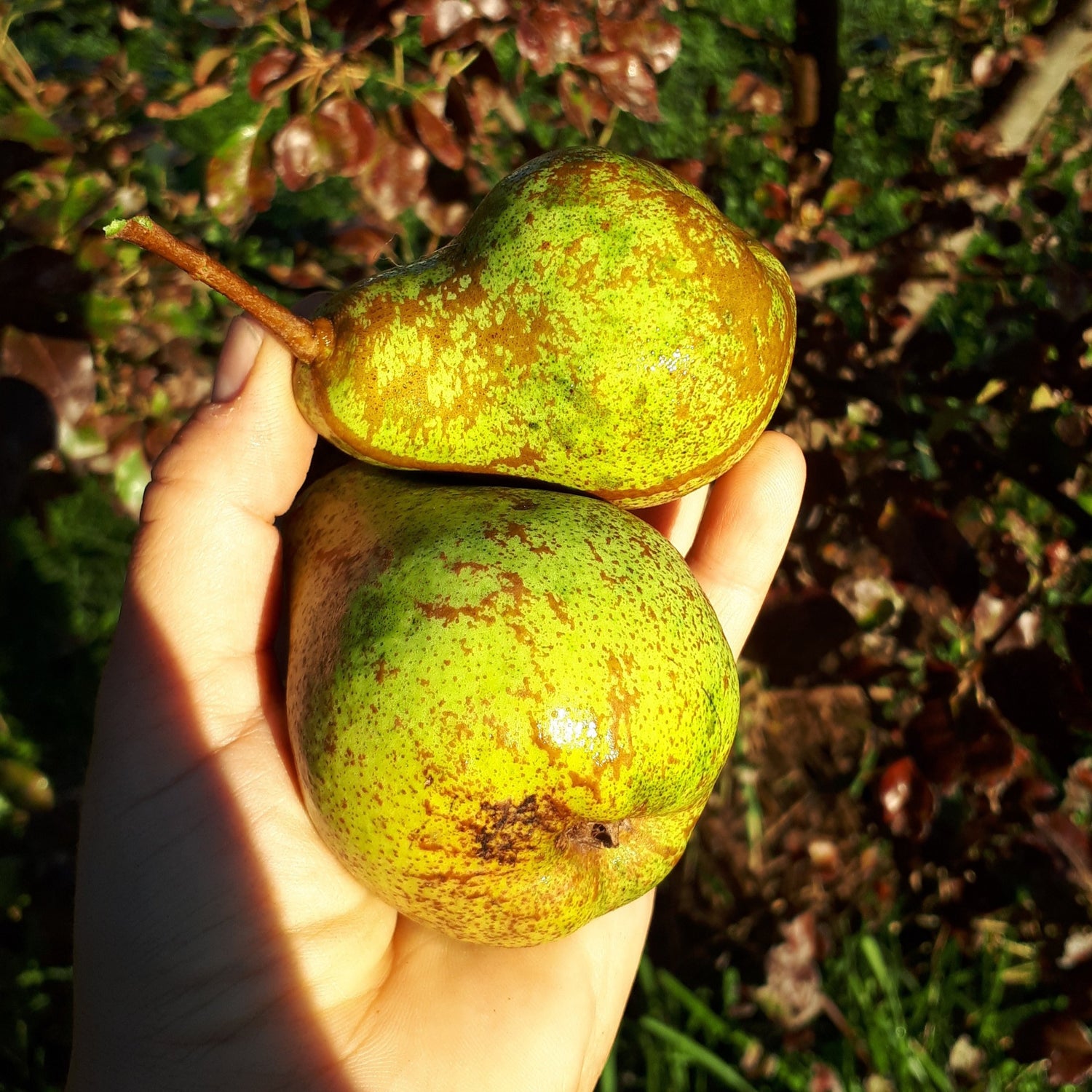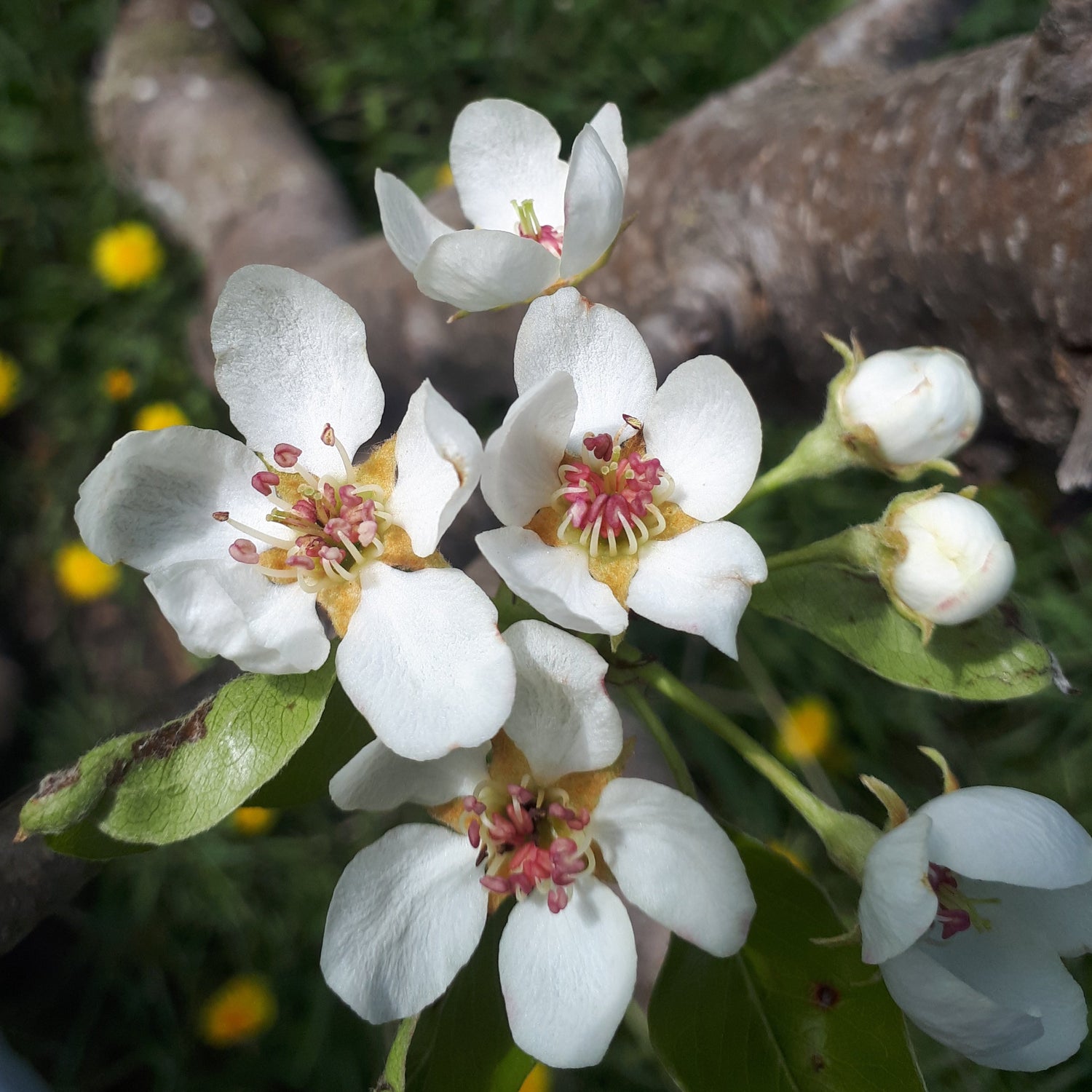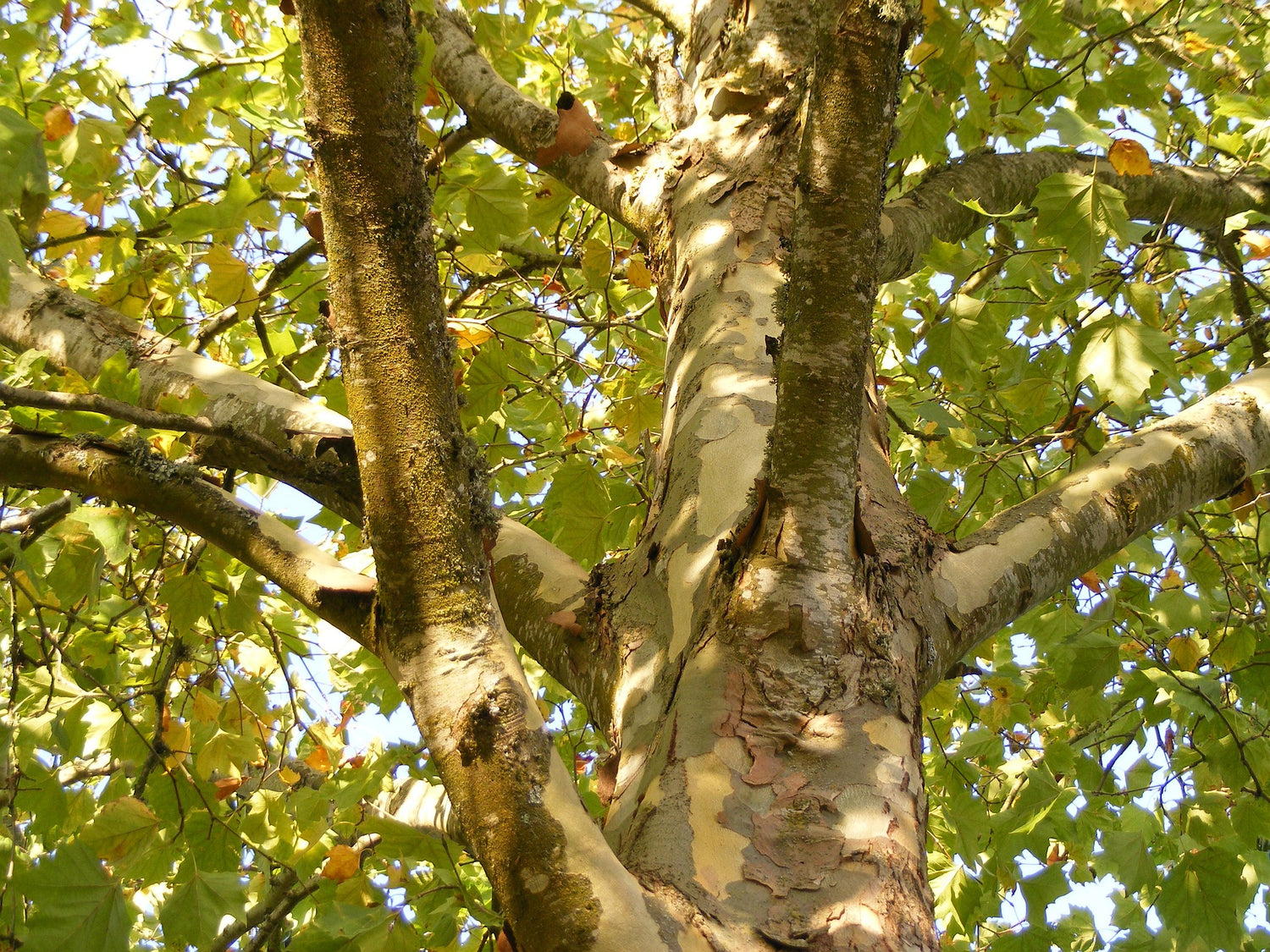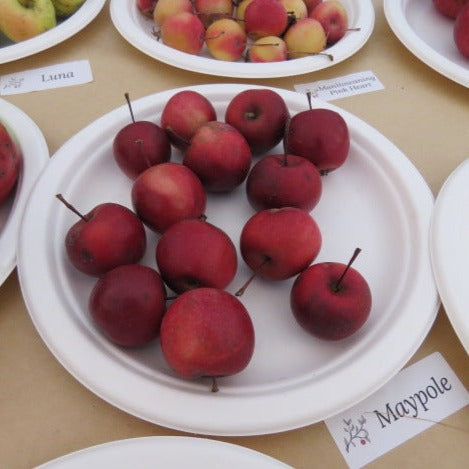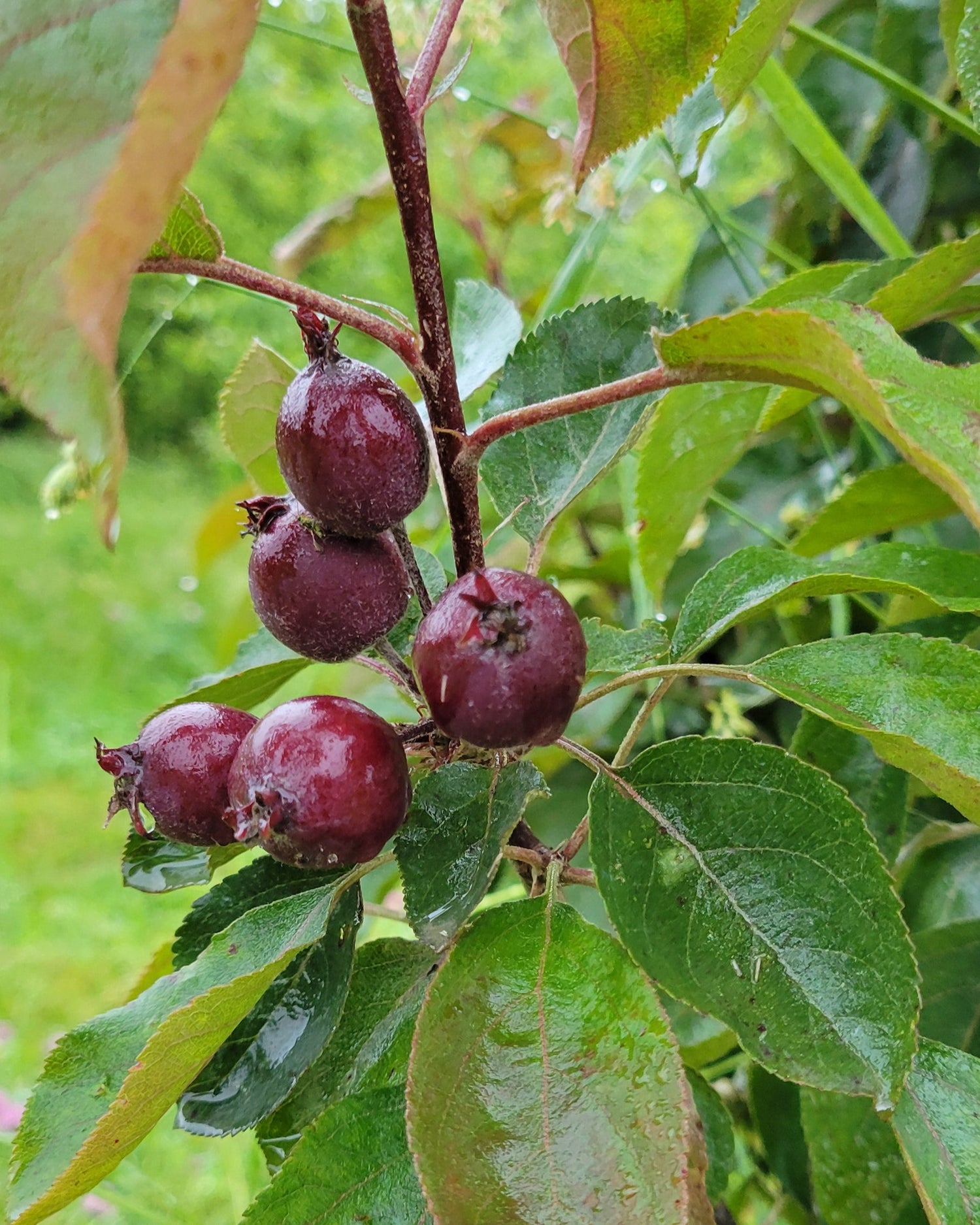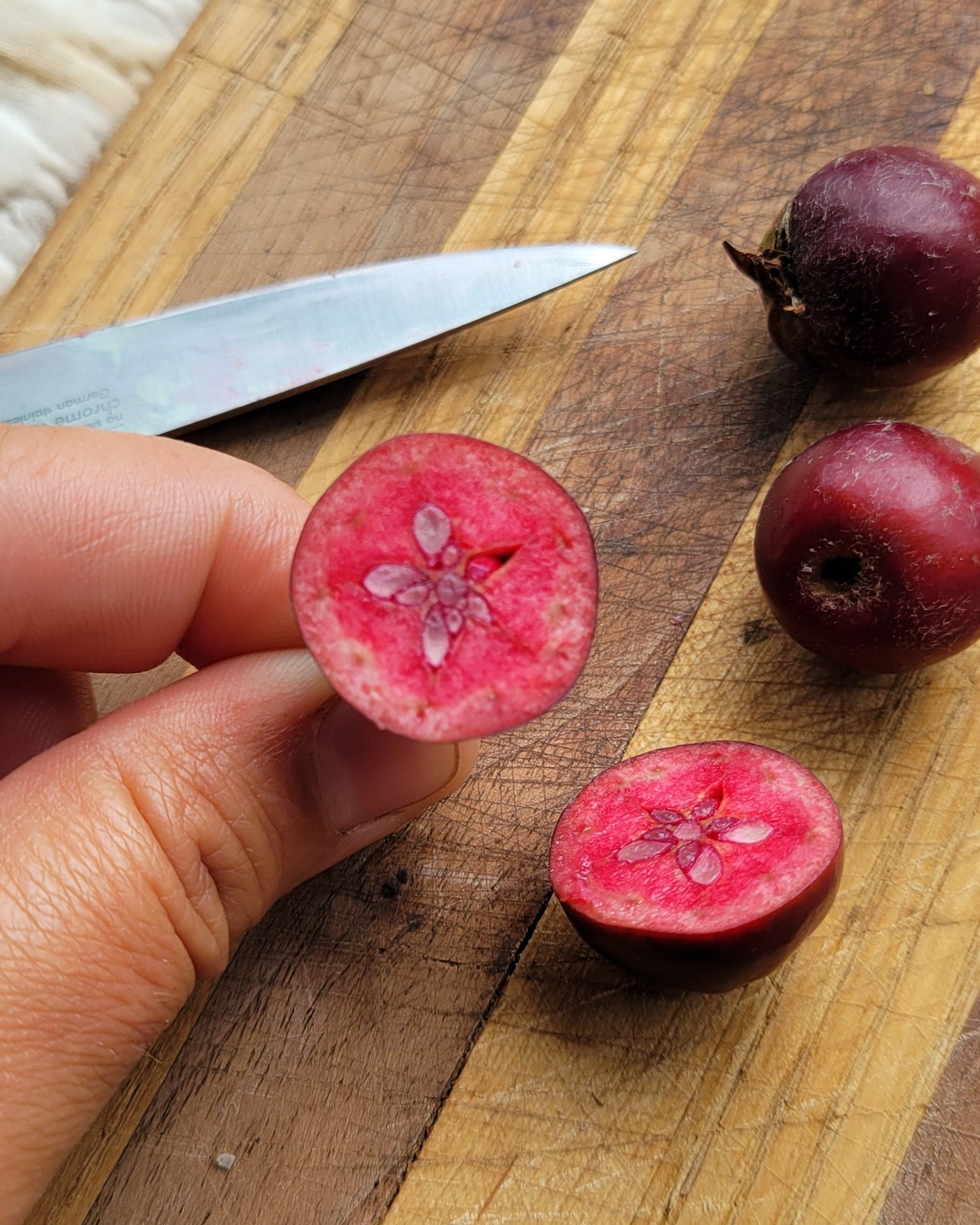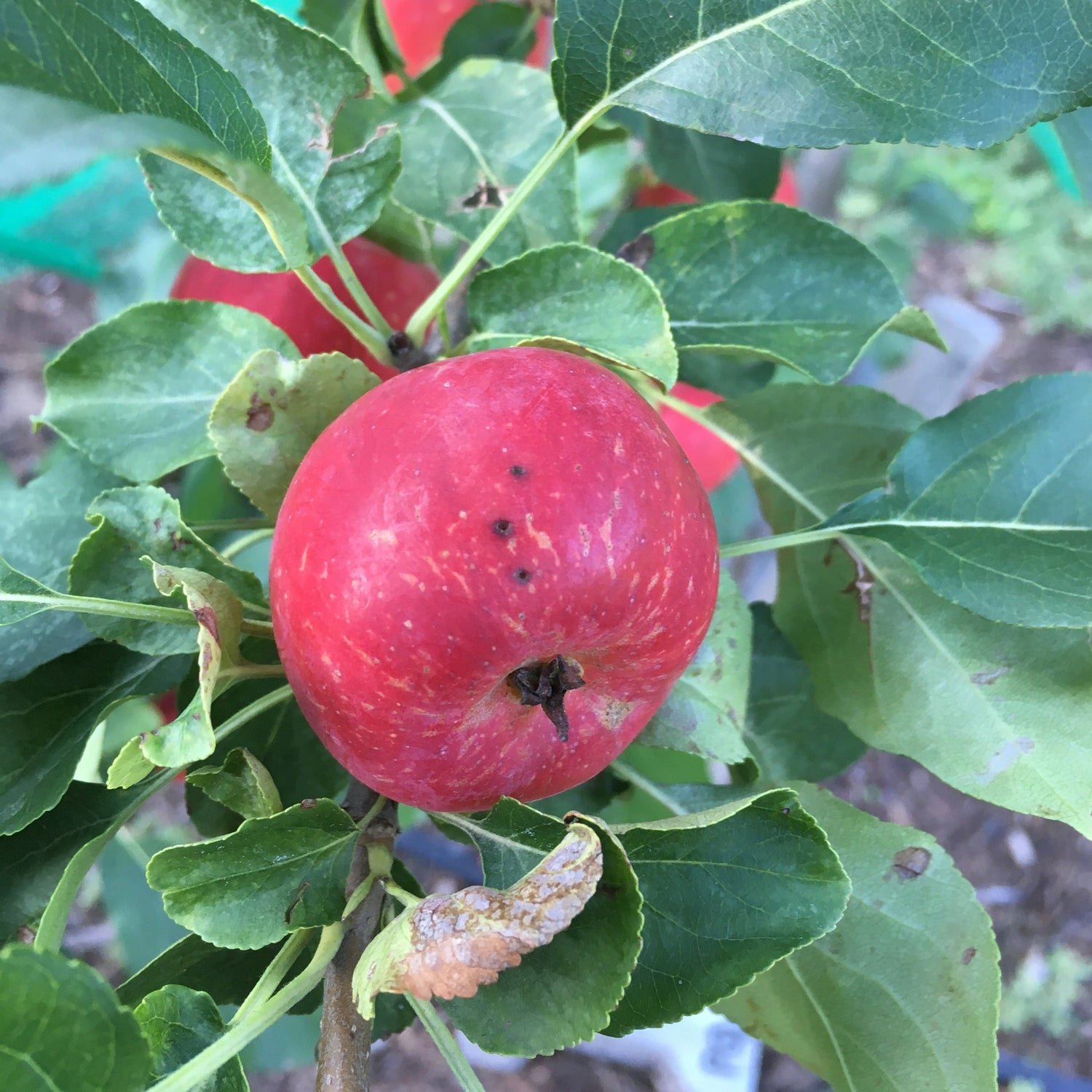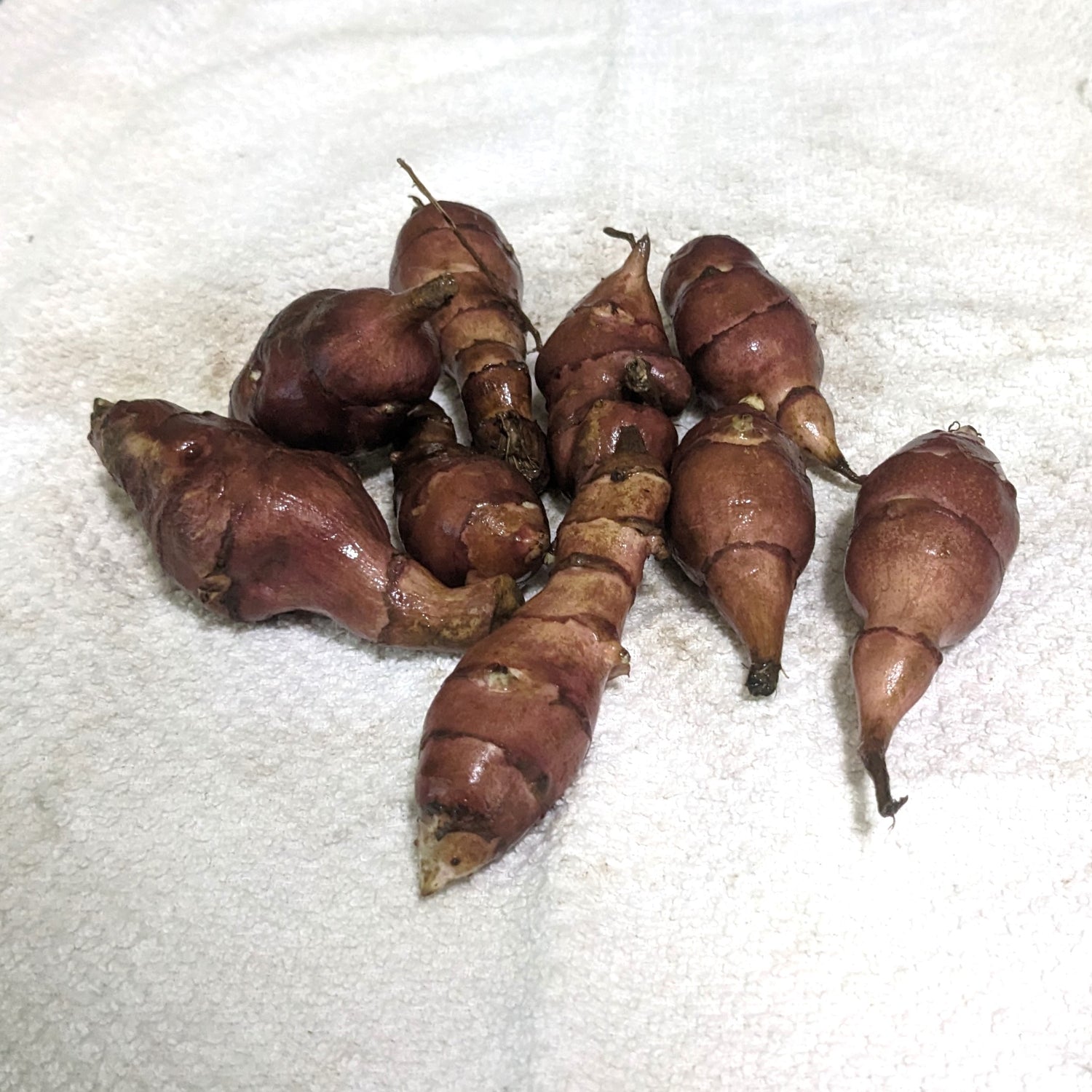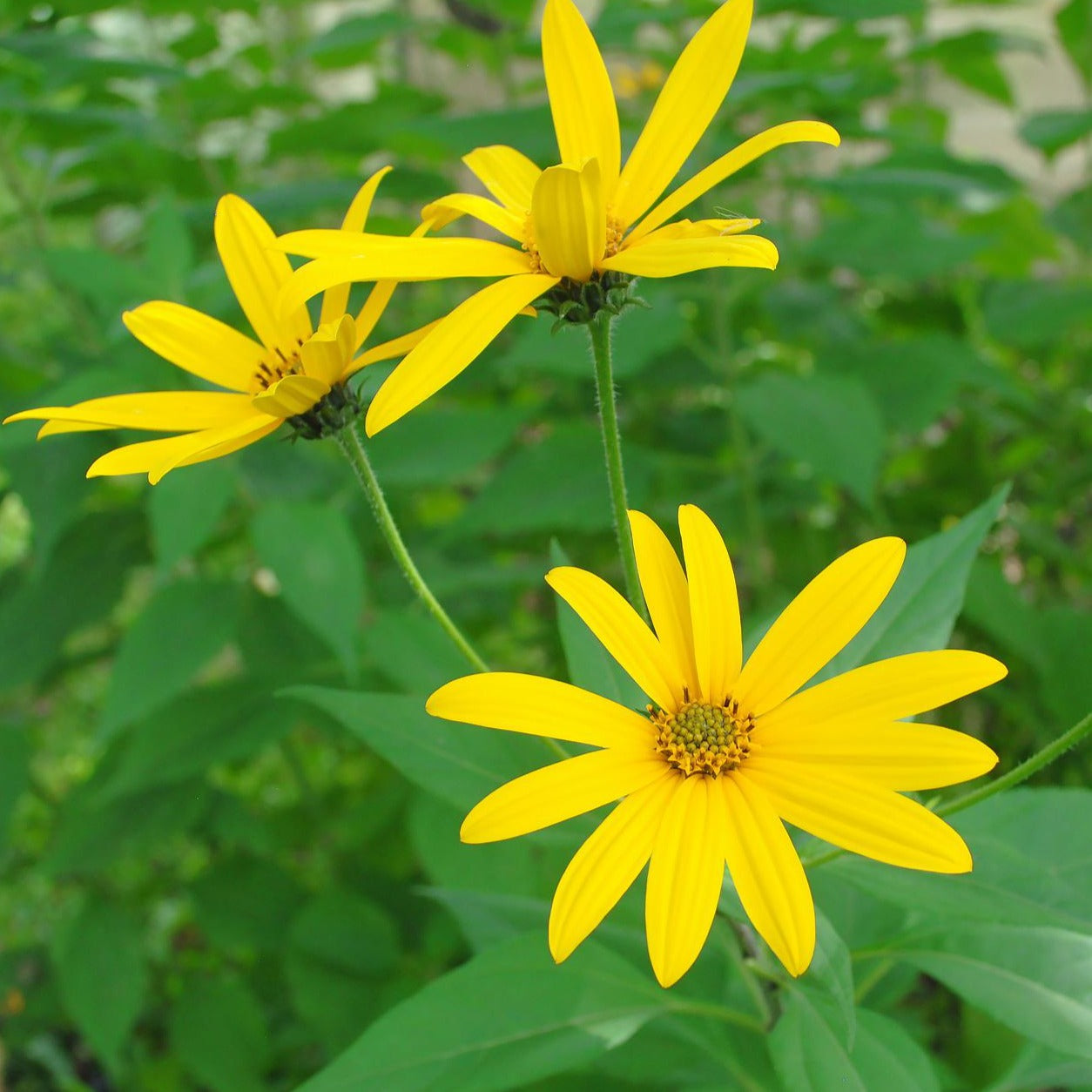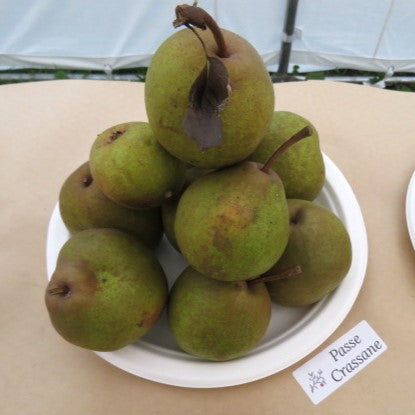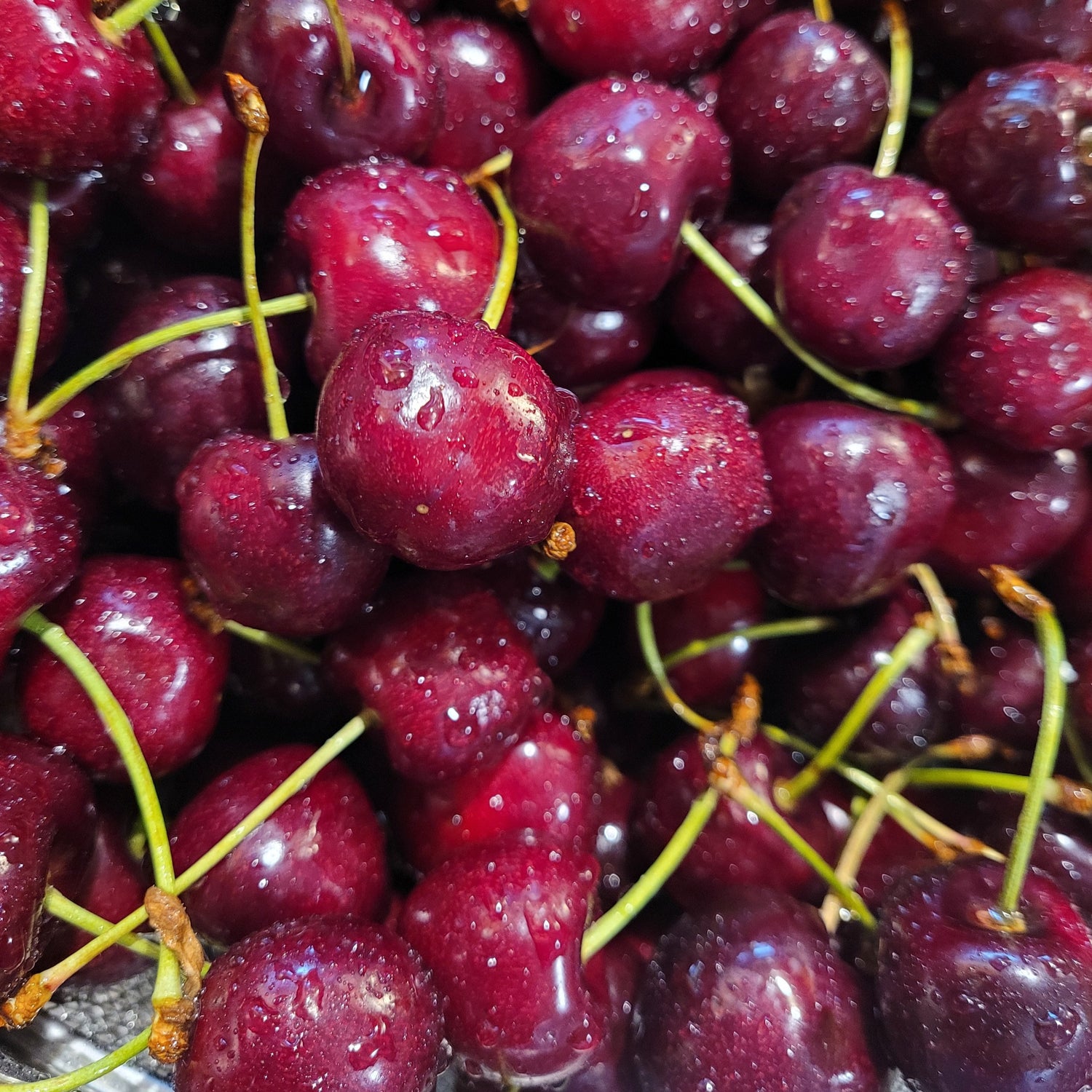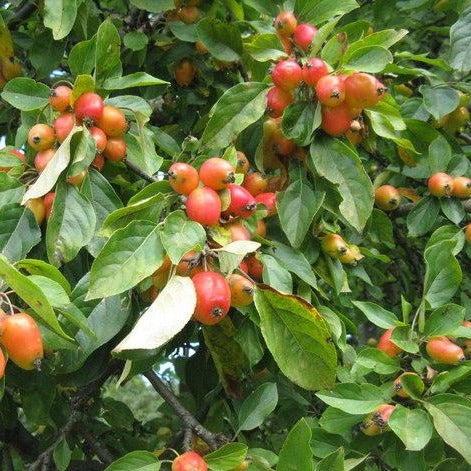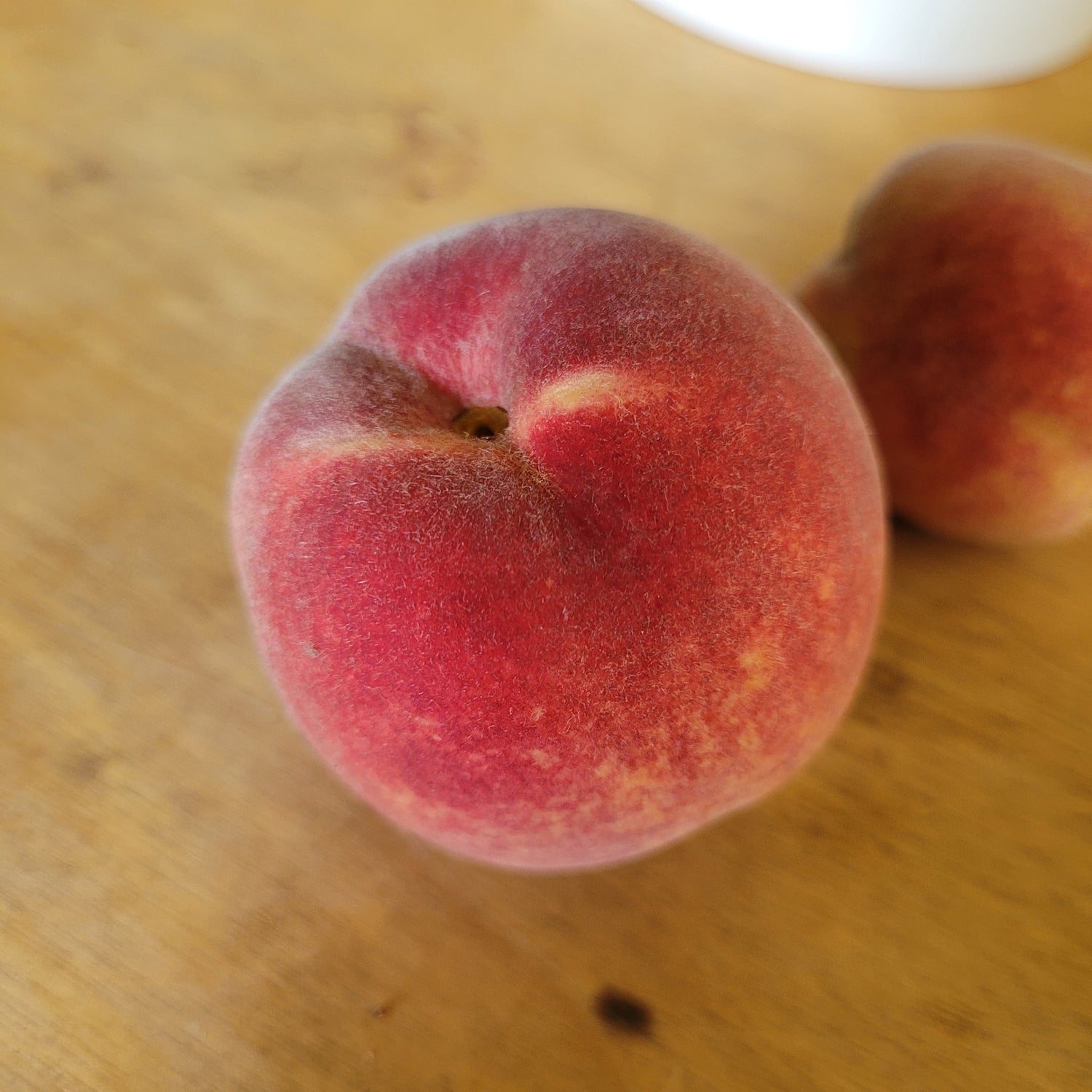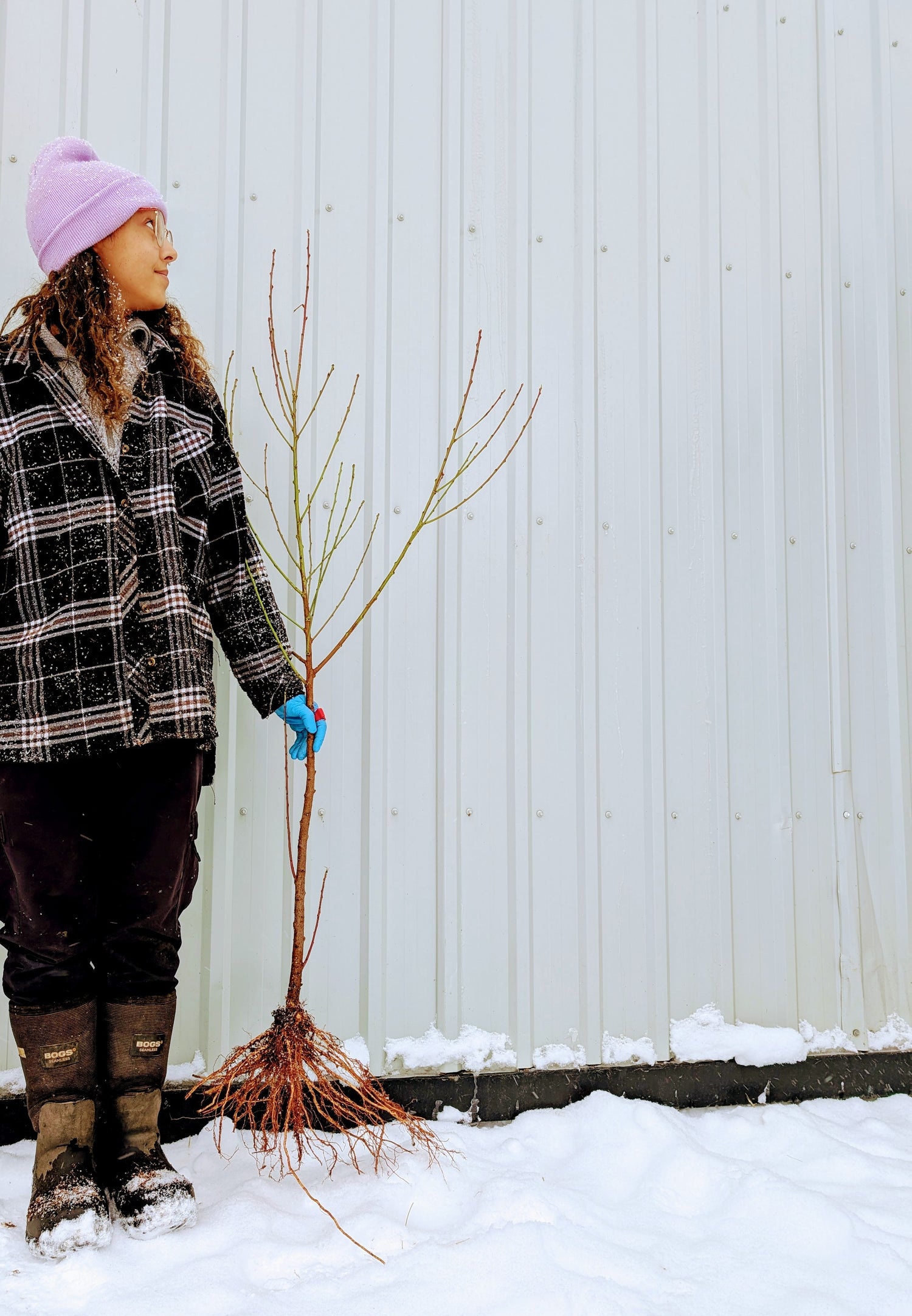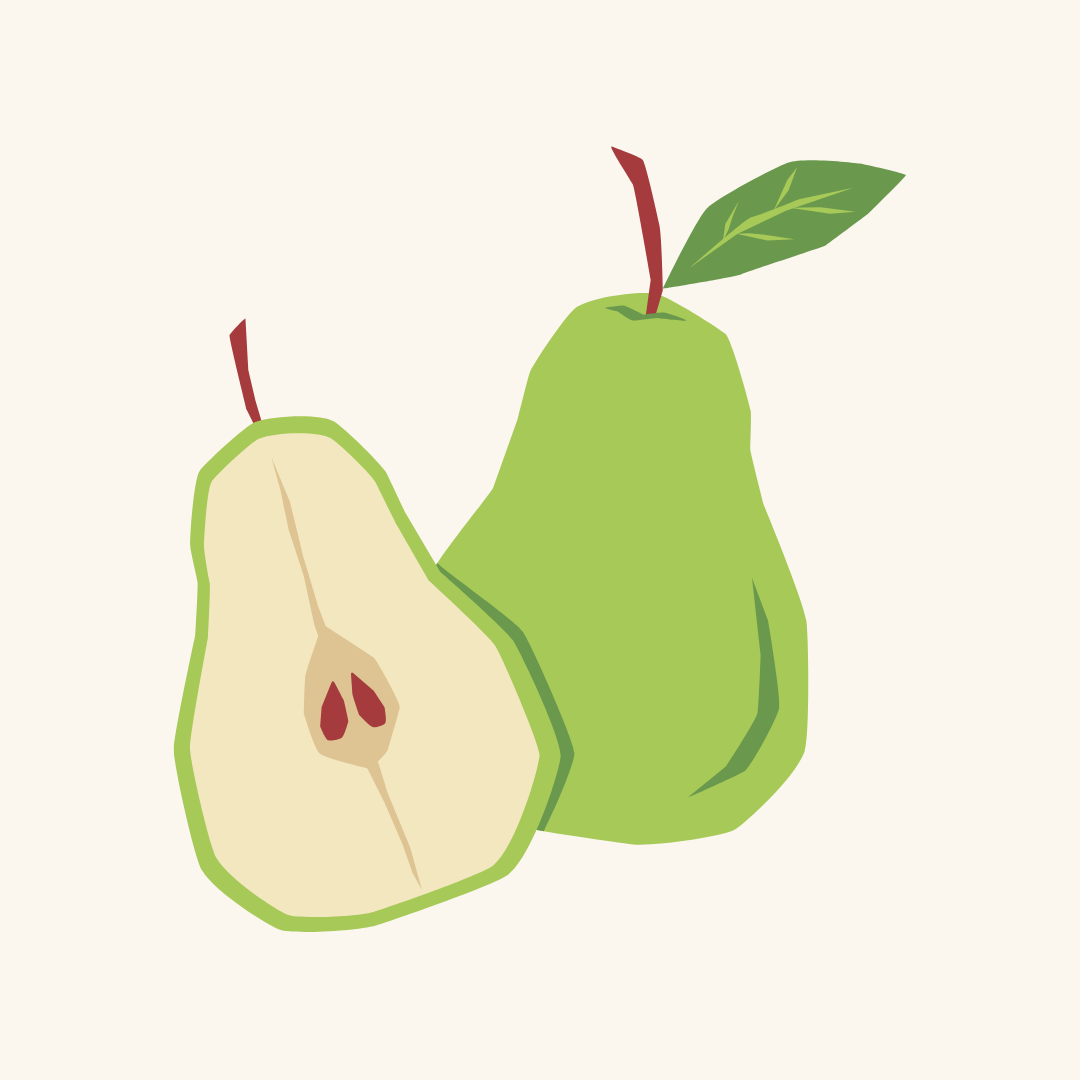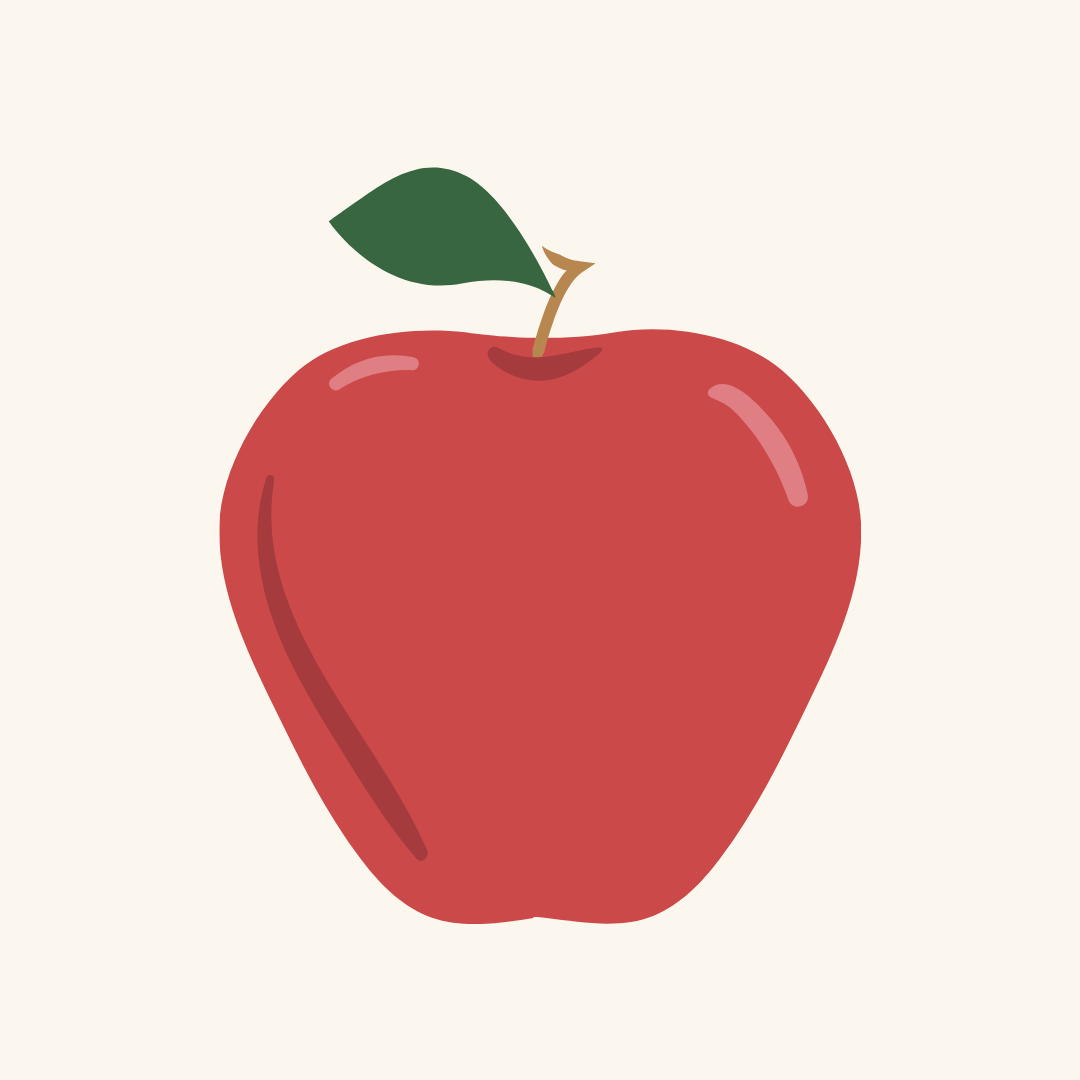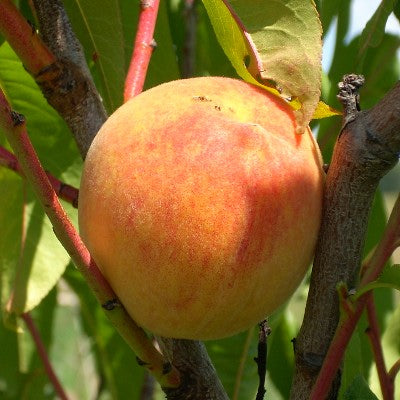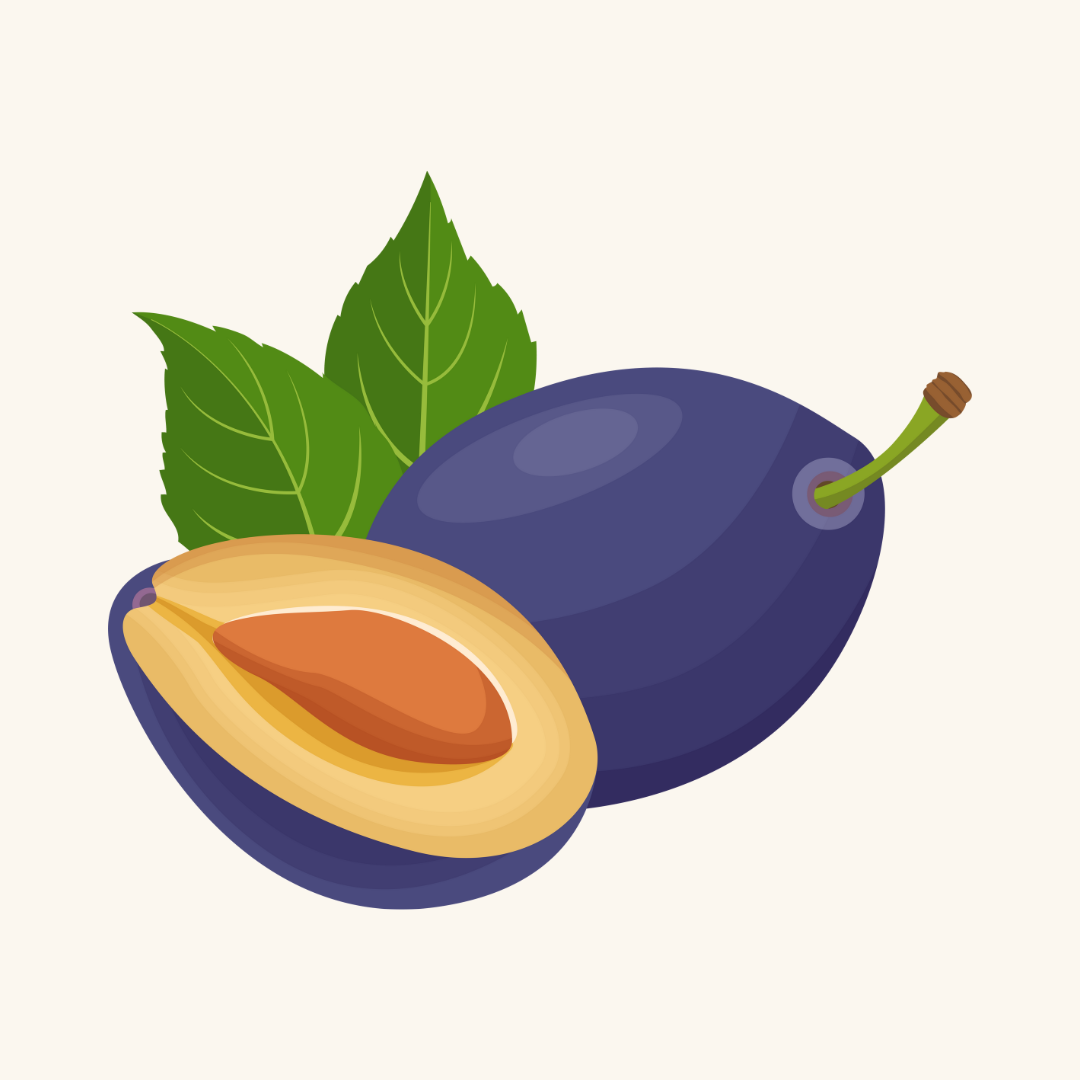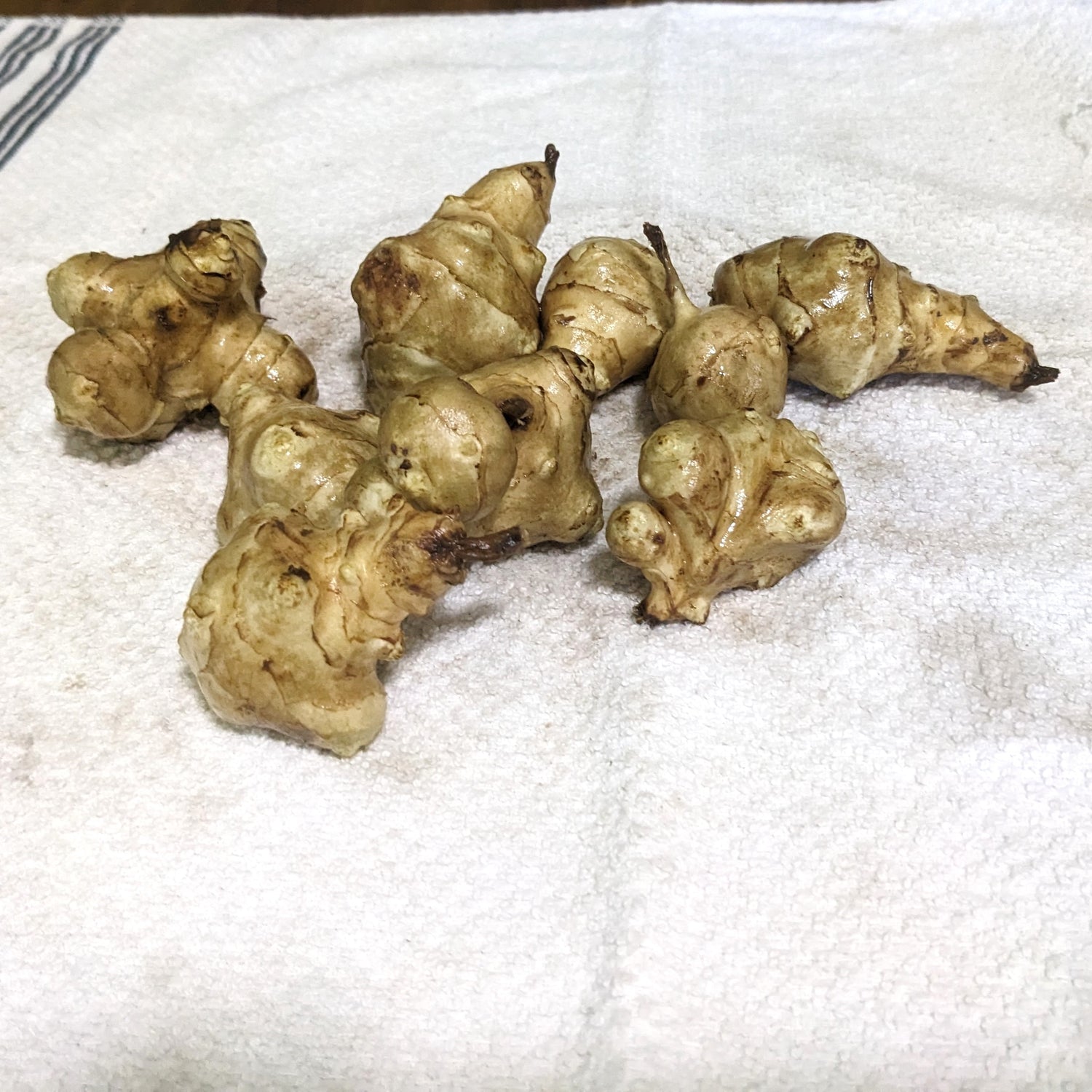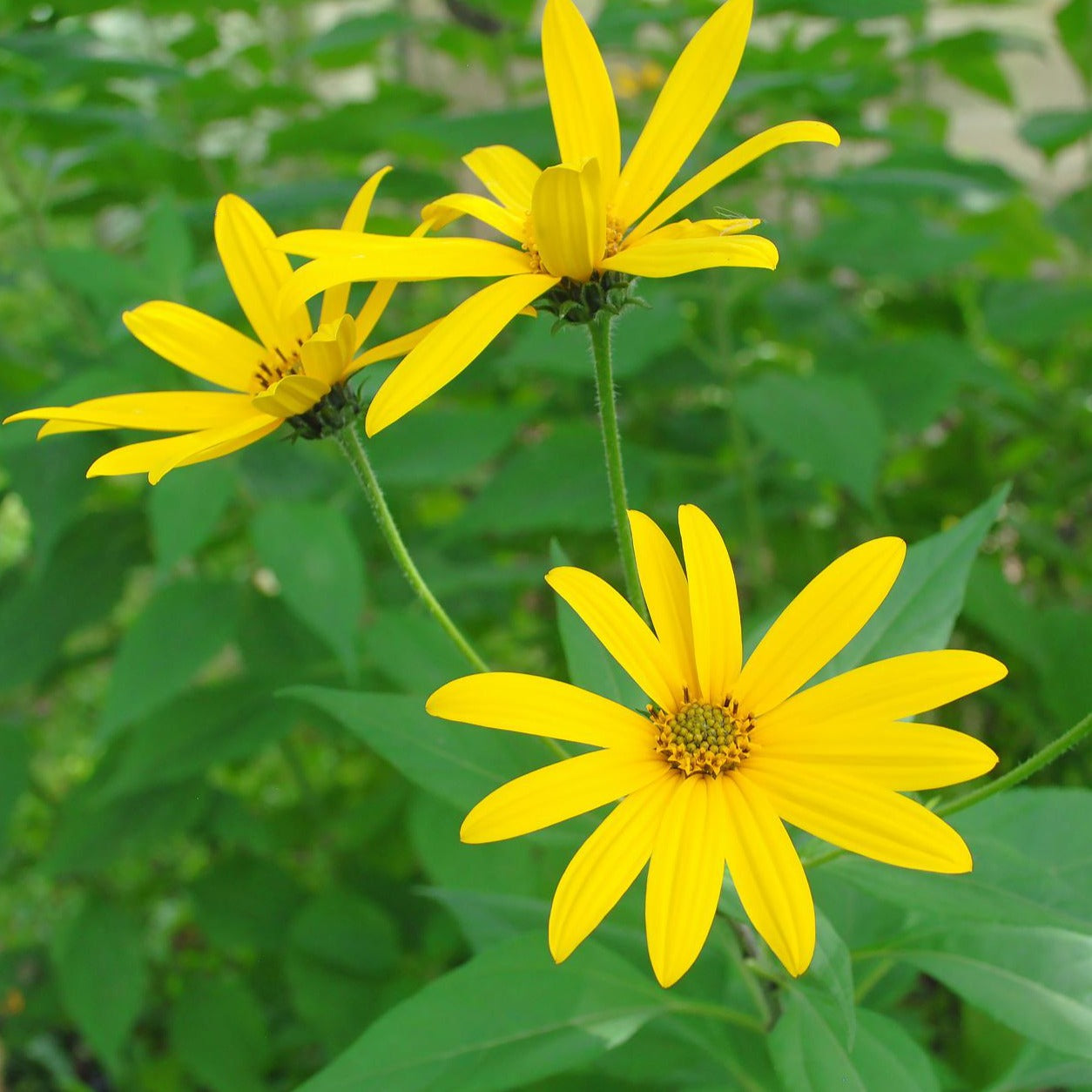All Zone 5 (or hardier) Plants
Sort by:
379 products
379 products
Why We Grow It: Although it failed to take off commercially, Silken is an excellent early fresh-eating apple. It is attractive with pale yellow skin sometimes with a faint pinkish blush. The fruit has crisp, juicy flesh that is quite sweet with a little bit of acidity. The tree grows quickly and tends to start bearing fruit at a young age.
History: Brookgold was developed at the Crop Diversification Centre South in Brooks, Alberta and was named for the town and its golden colour. It was introduced in 1979.
Why We Grow It: Brookgold, like other fruit varieties developed in the prairies, is very cold hardy! Although there is sometimes a trade-off between cold hardiness and fruit quality, this variety still produces small yellow freestone plums that are very sweet, making them great for fresh eating and good for canning and preserving.
History: Beurré Hardy was cultivated in France around 1820 by a Monsieur Bonnet and was named after Julien Alexandre Hardy, the director of the Luxembourg Gardens located in Paris. "Beurré" translates from French as "butter-like," referring to the smooth, juicy flesh that was typical of pears developed at this time in France and Belgium. It is considered a classic French fresh-eating pear and remains popular to this day.
Why We Grow It: Beurré Hardy produces a sweet, aromatic pear with white/pinkish flesh that has a hint of rosewater. It grows quickly but can take a while to start fruiting, although once it does it produces reliably heavy crops when grown in warm areas. Its blooms are tolerant of late spring frosts although it isn't always a very reliable pollination partner.
History: Winter Bartlett pears originated on the western coast of the United States, likely in Eugene, Oregon. They were introduced by D.W. Coolidge in 1880 but it is believed the variety may have existed for some time before that. It earned its name from it's resemblance to the Bartlett pear in taste and shape and it's designation as a winter pear.
Why We Grow It: As opposed to summer pears which are meant to be eaten shortly after picking, winter pears are supposed to be allowed to ripen for months in cold storage and enjoyed during later seasons. It is worth the wait for this variety, which produces a medium to large fruit with golden-yellow skin covered in patches and dots of russet and red streaks. It has a sweet and slightly subacidic flavour paired with firm, coarse, juicy white flesh. It is also great for cooking.
History: Jules d'Airoles was first discovered by Leon Leclerc in Laval, France, in 1836. It was named after Jules de Liron d'Airoles, a notable French horticulturalist and pomologist. Confusingly, this pear shares its name with a Belgian variety grown about twenty years later by François-Xavier Grégoire-Nélis.
Why We Grow It: This pear develops in storage to a wonderful treat: very sweet and a touch tangy, semi-fine juicy flesh, with pleasant tannic notes depending on the terroir. Smooth, thick green skin with a lovely rose blush where the sun touches the fruit.
Species: Platanus occidentalis
History: American sycamores (aka American planetree, buttonwood, and water beech) are native to the United States, the most northern parts of Mexico, and the most southern parts of Canada. The bark has traditionally been used by indigenous peoples to make bowls for gathering berries and the wood has been used to make butcher blocks. The tree itself was common as a street tree but its susceptibility to anthracnose made it visually unappealing and it was replaced by the London planetree. The Buttonwood Agreement, the founding document of the New York Stock Exchange, is named for this tree because it was signed under an American sycamore in 1792.
Why We Grow It: American sycamores are an attractive tree with visually unique camo-like bark and curious brown little seed balls that hang on through the winter. They can get quite tall and are a good wildlife tree. Just be mindful that the roots are good at clogging drain pipes so be mindful where you plant it!
History: Maypole was developed in 1976 by Plant Breeding International at the East Malling Research Station in the UK as a cross between Wijcik Spur McIntosh and Baskatong. Wijcik Spur McIntosh originated as a mutation discovered on a McIntosh tree in 1962 in the Wijcik Orchards in British Columbia, the branch growing oddly straight with little branching. Several varieties were deliberately bred to have this mutation and now Maypole, released in 1986, is one of six columnar varieties developed at the station. This series of trees is known as Ballerina in the UK but due to that name being unavailable in the US, they are known as Colonnade in North America.
Why We Grow It: Not only is Maypole unique as a columnar apple, this crabapple also boasts lovely red flesh, bronze coloured leaves, and pretty pink blossoms in the spring. This makes it overall a lovely ornamental tree to have, whether planted in the yard or in a pot. The fruit is also excellent for jelly, apple butter, and cider, adding a red hue to each. It can also be eaten fresh although it tends to be quite acidic with a touch of sweetness.
For the most up-to-date information see Claude Jolicoeur's website here!
History: This particular iteration of Trail, previously referred to as Bilodeau, has a bit of a messy history. A Trail crabapple tree was mislabeled at a Quebec nursery in the 1980s and sold to an unknowing customer named Claude Bilodeau who thought he was purchasing a pear tree. Later on Claude Jolicoeur, well-known Quebecois cider-maker and pomologist, took a cutting from this tree and found that the fruit (definitely not a pear!) was excellent for making cider. Since it was still a mystery what the original variety was, the crabapple was named Bilodeau by Jolicoeur after the owner of the tree - only for Paul Kron from the University of Guelph to confirm that it was actually Trail via DNA testing in 2022. The Trail crab was bred at Ottawa from a cross of Northern Queen x Rideau, it was selected in 1913 and introduced in 1920.
Why We Grow It: Despite the confusion, we are regardless happy to have this apple in our catalogue! This bittersharp cider apple has excellent cider-making qualities and, unlike most crabapples, is also great when eaten fresh or made into jelly!
Species: Helianthus tuberosus, Sunchokes are also known as Jerusalem Artichokes or J Chokes
History: Beaver Valley Purple was introduced by heirloom vegetable gardener William Woys Weaver in the latter half of the 1900s. When he visited Sarah Morgan, a cook and gardener, at her home in Beaver Valley, Pennsylvania, she showed him the unique purple sunchokes growing in her garden. According to Morgan, the purple sunchokes had been growing on the property when her husband purchased it in 1920 and locals already considered it an heirloom variety at that time. Weaver, a fan of heritage vegetables, named the variety and began to offer it through the Seed Savers Exchange.
Why We Grow It: Beaver Valley Purple produces a unique reddish-purple tuber that is visually quite distinct from other sunchokes. Sunchokes, similar to a potato, can be prepared and eaten in a variety of ways!
History: The Passe Crassane pear originated in France where it was grown by Louis Boisbunel in 1845 and first bore fruit in 1855. It quickly became popular and was grown in France, Italy, and Spain and commonly exported to Germany and England. The stems were sealed with a red wax to keep in moisture during the pear's long ripening period which became a symbol of the variety. Although its susceptibility to blight has caused its popularity to decline since then, it is still grown on a small scale in parts of France and Italy.
Why We Grow It: This French winter pear is aromatic, floral, and fruity with a melting texture. It is best enjoyed after 4-5 months in storage, usually around February to March. Although the tree is hardy, it is susceptible to mildew and fireblight.
History: Although its exact origins are unclear, it is believed that Barland comes from Bosbury in England. It was already well known by the late 1600s and its perry was believed to have medicinal properties. This perry pear has stood the test of time and is still widely grown in the UK.
Why We Grow It: Barland remains one of the most popular perry varieties. This bittersharp perry pear can be made into a good single-variety perry or added into blends.
History: Glowing Heart was bred in Toronto by Fred Jansen, one of the founders of the North American Fruit Explorers (NAFEX). This unique apple is still in its early years.
Why We Grow It: This variety has a unique pink and white flesh and is quite acidic. One bite will make you pucker! Although not the best option for fresh eating, this apple creates an aromatic jelly with rich flavour and can be used in ciders as well. It does well in organic orchards.
Species: Rubus fruticosis
History: Triple Crown was bred in Beltsville, Maryland by the USDA in order to create a good thornless variety for commercial sale. It was released in 1998 and was named Triple Crown due to its three crowning qualities: good flavour, high yields, and vigour.
Why We Grow It: Triple Crown produces large, glossy berries that are sweet and tart. It bears fruit uniformly and the canes are thornless, making the berries very easy to pick. They are good for fresh eating and great for baking.
History: Brettacher Sämling (sämling meaning seedling in German) originated as a chance seedling on a farm in Brettach, Germany in the early 1900s. It is possibly a descendent of the French cooking apple, Lebel. It is known for its excellent storage qualities and is still grown commonly in parts of Germany.
Why We Grow It: Brettacher Sämling produces large, juicy apples with a sweet-tart fruity flavour that has a hint of spice. The apples, green with a red blush, are best enjoyed after being stored for two months. They are fairly versatile, also considered suitable for sauce and juice/cider. Compared to other apple trees, this variety is relatively low maintenance and only requires a hard prune every two to three years.
History: Lapins (aka Cherokee) was developed at the Summerland Research Station in British Columbia by Latvian agronomist Karlis Lapins, an important figure in the development of self-pollinating sweet cherry varieties. He created Lapins by crossing Stella and Van sweet cherries, and although the variety was released in 1983 after he retired, it was named in his honour. The variety was also awarded the Royal Horticultural Society's Award of Garden Merit. Although quite popular when it was first released, Lapins have since been supplanted by other cherry varieties due to their popularity and its inconsistent quality when shipped.
Why We Grow It: These lovely deep purple cherries are quite similar to Bing. They have a pleasant, mild flavour and can be used for fresh eating, cooking, and canning. The fruit is resistant to cracking and the tree grows well and begins bearing fruit a little earlier than other varieties.
History: John Downie was raised by Edward Holmes, a nursery worker in England, in the 1870s. The variety was named after another nursery worker and friend of Holmes, John Downie. John Downie crabapples remain one of the most popular of the English crabapples.
Why We Grow It: This crabapple sports bright orangey-red fruit, often used to create some of the best jelly around. With its sweet-tart flavour, this crabapple can be pressed into a cheery orange juice that is a great addition to cider blends.
Species: Prunus persica
History: These seedlings are grown from Reliance peach seeds collected from mother trees growing in Ontario. Reliance peaches were developed in a breeding program at the Agricultural Extension Station in New Hampshire and released in 1964.
Why We Grow It: Seedling fruit trees are a great way to add some diversity and mystery to your garden or orchard! We expect that seedling peaches will be even hardier trees than their parents! The parent variety, Reliance, is a cold hardy variety perfect for Canadian growers. The fruit tastes great and can be eaten fresh or used in baking and preserves.
Please Note: Since peaches tend to stay true to type more than apples, these seedlings will likely bear a strong resemblance to their parent variety. However, any specific information listed on this page should be taken with a grain of salt as there may be some variation from the parent tree.
History: The history of Blenheim Orange is a bit muddled depending on your source. We know it was discovered by George Kempster (either a baker, a tailor, or a basket weaver depending on who you ask!) in England in 1740 and it was originally named Kempster's Pippin. Some say he found it as a seedling growing along a wall of Blenheim Palace while others claim he grew it in his garden located near Blenheim, England. It was later renamed to Blenheim Orange in the early 1800s, likely when it was sold commercially through nurseries. This variety has many other names, including: Beauty of Dumbleton, Blooming Orange, and Northwitch Blenheim. The tree itself is also known for its sturdy wood and it was at one time popularly used to make railway cogs.
Why We Grow It: These large, somewhat flat apples feature orangey-red stripes over yellow skin with some russet. The fruit is good for fresh eating with a nutty taste and is quite nice when paired with cheese. It is also great for cooking and makes a stiff purée. The tree is highly vigorous but can be slow to come into production, although it has heavy crops once it does.
History: Sekai Ichi (translated literally from Japanese as 'world number one,' more accurately meaning 'best in the world') was bred at the Prefectural Experiment Station in Aomori, Japan in 1930 and released in 1974. It is a cross between Red Delicious and Golden Delicious. This variety is quite highly regarded in Japan where a single apple can sell for as much as $25 each. Each apple is hand pollinated, washed in honey, and hand-stamped while being inspected to ensure its quality.
Why We Grow It: Although we don't get quite that fancy here, Sekai Ichi is nonetheless a great apple if you enjoy sweet, crunchy, apples with no acidity, as is common with Japanese varieties. It is red over greenish skin and very large with an average circumference of 30-45cm and average weight of 2lb. The tree itself is very vigorous although slow to start bearing fruit with a tendency towards biennial bearing.
History: Skeena was developed at the Summerland Research and Development Centre in British Columbia in 1976 as part of an initiative to create a high quality cherry that ripens later in the season than other varieties. It is a cross between several self-pollinating varieties and was introduced in 2000.
Why We Grow It: These dark red cherries are often considered an improvement over Lapins with their larger size, good firmness, and general ease of harvest due to the spreading way the tree grows. The flavour is sweet with a touch of acidity. The tree itself grows vigorously and tends to start bearing fruit at a young age.
History: Little is known about this variety aside from the fact it originated in France and was widely grown in Austria. It has historically been popular in both countries. Its name translated from German means Normandy Cider Pear, which may point to its place of origin or at least where it was most popular in France.
Why We Grow It: Normannischen-Ciderbirne produces small, russeted pears that are a greenish-yellow. The fruit produces high quality juice for perry.
Why We Grow It: These large, red apples boast a high acid content along with high sugars and a strong fruity flavour, making them excellent cooking apples. Like other English cooking apples, it breaks down when cooked.
Species: Rubus sp
History: Hardy Black originated in Nova Scotia. As the name implies, the variety was selected for its hardiness along with excellent fruit.
Why We Grow It: This hardy variety produces large, dark berries that are sweet and juicy. To make it even better, they bear fruit over a long period of time which gives you that much more of an opportunity to enjoy these lovely berries.
For the most up-to-date information on this cultivar, see Claude Jolicoeur's website here!
History: Well-known Quebec cidermaker Claude Jolicoeur discovered this variety as a chance seedling growing on his property. The fruit is bitter with a banana-like aroma, and was therefore given the name Banane Amère (translated from French as 'bitter banana').
Why We Grow It: Despite its inedible nature, Banane Amère is an excellent cider apple and produces a bittersweet juice. It shares some characteristics with the popular cider variety Yarlington Mill but tends to ripen better in our climate.
Species: Prunus persica
History: These seedlings are grown from Coralstar seeds collected from mother trees growing in Ontario. Coralstar was developed through the Fruit Acres Stellar Peach Breeding Program.
Why We Grow It: Seedling fruit trees are a great way to add some diversity and mystery to your garden or orchard! We expect that seedling peaches will be even hardier trees than their parents! The parent variety, Coralstar, is hardy and great for fresh eating and canning.
Please Note: Since peaches tend to stay true to type more than apples, these seedlings will likely bear a strong resemblance to their parent variety. However, any specific information listed on this page should be taken with a grain of salt as there may be some variation from the parent tree.
History: Despite once being the most commonly planted commercial plum tree in New York, Bradshaw's origins are quite hazy. It is uncertain whether the variety even originated in Europe or the US. It was named in 1846 by C.M. Hovey who wrote about it in his "Magazine of Horticulture," naming the variety "Bradshaw" after an E.E. Bradshaw who had exhibited excellent specimens of the fruit for several years. Bradshaw has since been eclipsed by other plum varieties.
Why We Grow It: Bradshaw produces relatively large purplish-red plums of good quality. The flavour is pleasantly sweet and the variety is good for fresh eating and likely cooking and processing like other European plums. It is semi-clingstone. The tree is self-fertile, productive, and quite hardy, although it can be slow to start bearing fruit.
Species: Salix babylonica 'Tortuosa' syn. S. matsudana
History: Corkscrew willows are a variant of the Chinese Willow which are native to parts of northern China. Willow trees have been cultivated for millennia in Asia and this variety was likely selected for its unique twisting branches.
Why We Grow It: Corkscrew willows are an attractive ornamental tree year-round, sporting delicate leaves most of the year and then fully displaying their twisted branches and trunks once they have dropped their leaves. The flowers they produce in the spring are attractive to a variety of pollinators. Just be mindful of where you plant the trees, the vigorous roots can be a problem near buildings and pipes!
Species: xSorbopyrus irregularis (Pyrus communis x Sorbus aria), also referred to as xSorbopyrus auricularis although this name is no longer correct
History: Shipova is a unique cross between European pears and Common Whitebeam* (Sorbus aria) which readily hybridizes with many other fruiting plants in the rose family. As a surprise hybrid, the history of Shipova is a little foggy. This cross supposedly appeared, or was perhaps planted, at Bollwiller Castle in France in the 1600s and was called Bollwiller Pear. It was cultivated in gardens in the late 1700s and early 1900s. It may have also originated in Yugoslavia and is popular in Eastern Europe today. Shipova was first brought to the US in 1959 and was imported from Yugoslavia. Today, it appears to remain something of a novelty in North America.
Why We Grow It: Shipova is a truly unique fruit tree and it is a shame that it is not grown more commonly. They are quite cold hardy and relatively disease-resistant. The trees produce clusters of small, round fruit that resemble pears. They are dense and crisp with a sweet flavour reminiscent of tropical fruits.
*Many places list Shipova as a cross between European pears and Mountain Ash. More precisely, the genus Sorbus is the Mountain Ash genus and the specific tree that is the parent of Shipova is the species Sorbus aria, commonly known as Common Whitebeam
Species: Helianthus tuberosus, Sunchokes are also known as Jerusalem Artichokes or J Chokes
History: Corlis Bolton Haynes discovered a wild sunchoke growing on the farm her parents purchased in 1925 and then spent over sixty years selectively planting the biggest and smoothest tubers in order to improve on the plant. Corlis sadly passed away in 2003 but her family maintains the tradition of only replanting the biggest and best tubers.
Why We Grow It: This variety produces large, white, knobby tubers that like a potato can be prepared and eaten in a variety of ways! This variety is quite productive and the tall plants can be used as a temporary windbreak and/or privacy screen.
History: AKA Co-op 30, Enterprise is one of the many varieties that was developed through the collaborative PRI disease-resistant breeding program run by Purdue University, Rutgers University, and the University of Illinois. It was introduced in 1993 and has proven to be a very reliable variety. Although its name does not start with 'PRI' like many of the other varieties that came from this program, they still snuck the initials into Enterprise's name.
Why We Grow It: Enterprise produces crisp fruit that it is known for its strong, rich, tart flavour that can be described as spiced. It is a very disease-resistant variety that grows quickly, produces reliable crops, and stores for a long time. They are good for fresh eating although the skin is on the thicker side, and they can be used for cooking, baking, and sauce.

